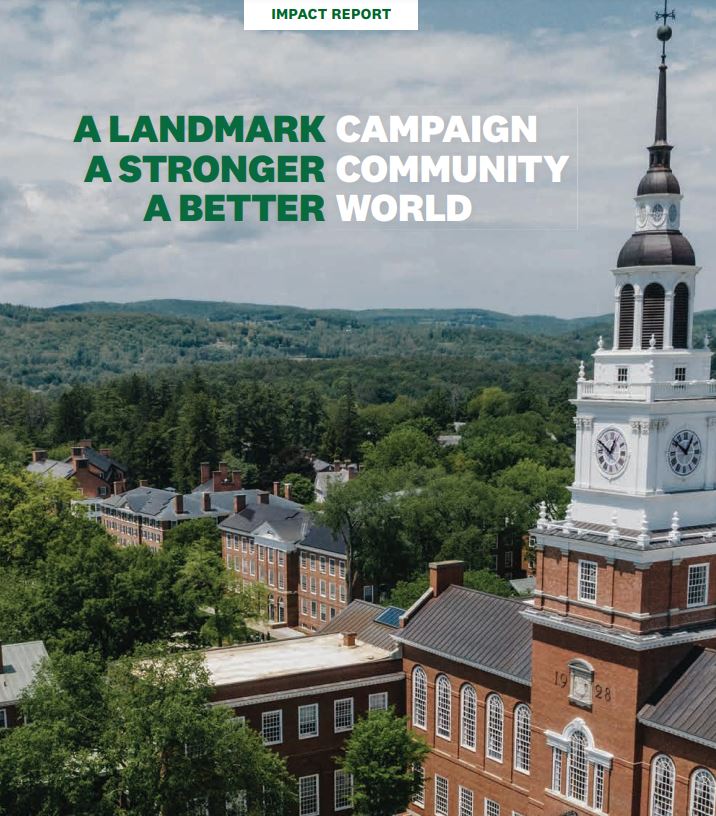
Dartmouth Answers The Call to Lead: $3.77B and 60% Participation
From the Nominator
Dartmouth undertook The Call to Lead campaign to advance our unique educational model to its full potential, become a leading authority on key global issues, and prepare students for lives of leadership. Nearly 100,000 donors committed over $3.77 billion. It was a campaign for everyone—60% of undergraduate alumni made a gift, and 40% of all donors contributed less than $500. The campaign dramatically increased financial aid, transformed the physical campus, and elevated the college to new levels of recognition. The true success of the campaign will be measured by lives changed. Metrics of institutional strength have been on an upward trend since the campaign launch. The undergraduate admissions yield rate has risen from 50 percent to 70 percent. The strength and distinction of Dartmouth’s financial aid program has helped convince applicants and their families of the affordability of a Dartmouth education. The average first-year undergraduate financial aid award has grown from $47,000 to $67,000—and student loans are no longer required. Dartmouth has added more than 500,000 square feet of academic, athletic, and student life space for learning and leadership development. The campaign has also funded major renovations of the Hood Museum of Art, the Dartmouth Outing Club House, the Hopkins Center for the Arts, and—led by women—Dartmouth Hall. In 2017, the Carnegie Commission on Higher Education designated Dartmouth an R1 top-level research institution. Two years later, Dartmouth was invited to join the Association of American Universities, a consortium of 65 leading U.S. public and private research universities.
From the Judges
This campaign took a novel and unique approach to priorities, reaching its goal and showing great metrics.The presentation of campaign initiatives and goals was clear and effective, showcasing a well-planned and executed strategy. Judges appreciated the focus on women's philanthropy and the consistent marketing and communications approach. The university communicated the importance and potential impact of philanthropic investment.